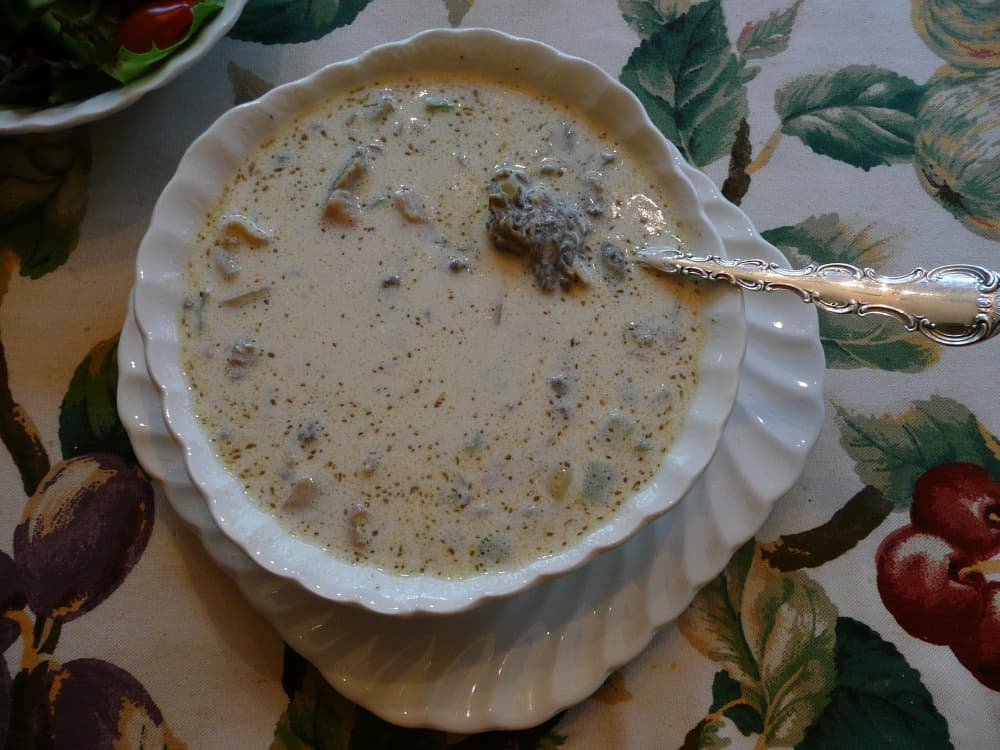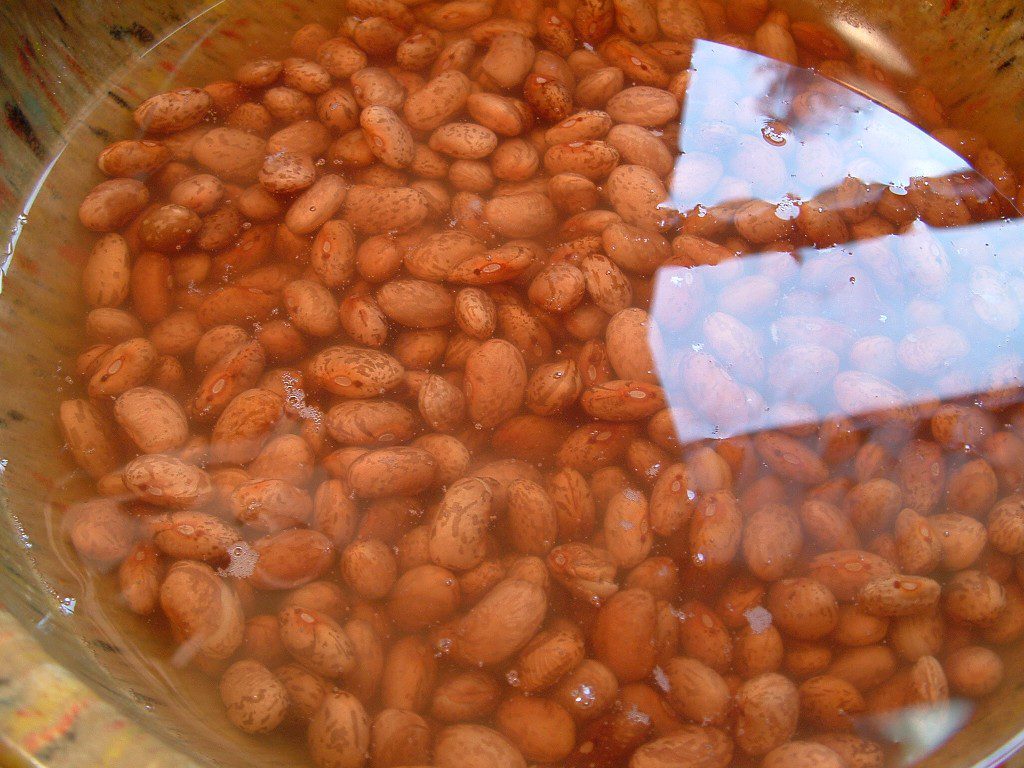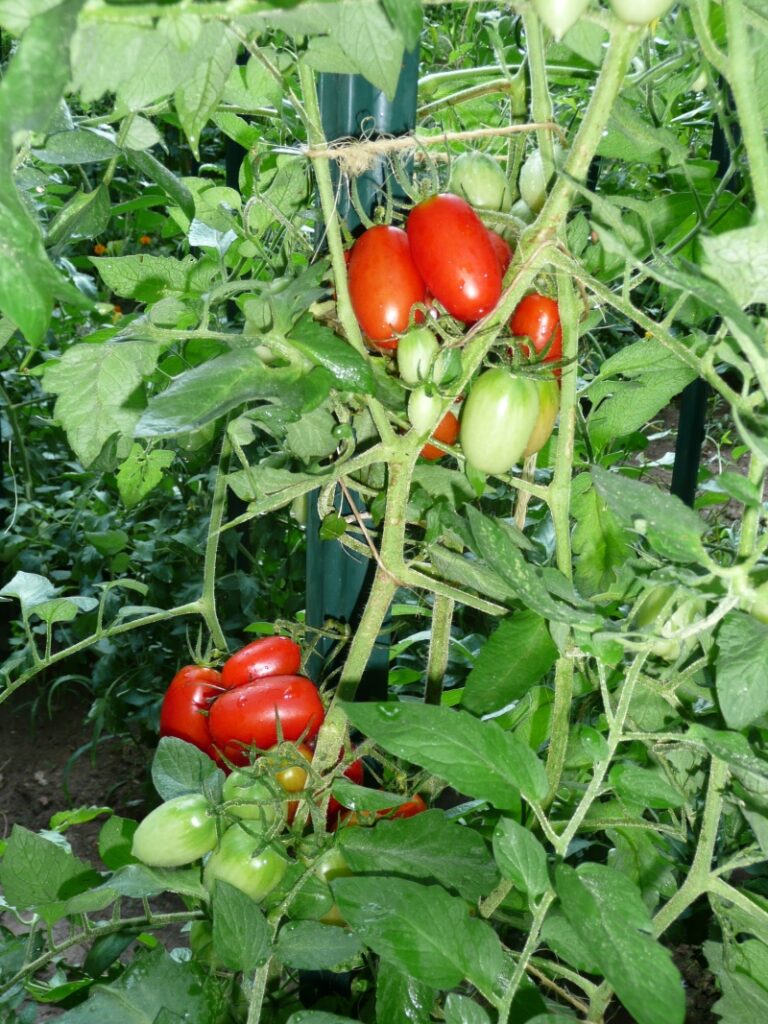CAN WE JUST FORGET FEBRUARY?
As I’ve written multiple times in this newsletter over the past two decades or so, my beloved Grandpa Joe was anything but a fan of the month of February. He would talk about aching from “the miseries,” and today, having reached the age when he regularly pontificated on such matters, I understand precisely where he was coming from. As a boy though, I was all full of piss and vinegar, thought I was pretty much impervious when it came to things such as colds, being down in the dumps, or just generally feeling rotten. My how things have changed!
I must also acknowledge that my level of energy is appreciably lower than it was when I launched this monthly effort while in my early 60s. Still, I feel blessed in a bunch of ways. I’ve got sufficient mental acuity to string words together, or else folks such as you in the ranks of my readers are too kind to tell me otherwise. I still manage to write a few dozen magazine pieces each year, publish 52 newspaper columns annually, and be working on at least one book at all times. I can still drive, still hunt (although my running and gunning days are long gone), do a reasonable amount of physical labor, cook and clean for myself, and generally enjoy independence. Nonetheless, there’s neuropathy, at times quite painful, to deal with, and a big old house that’s sort of like its sole resident. It’s showing its age.
Maybe what troubles me most is seeing, pretty much on a weekly basis, a death among my life’s circle of acquaintances. A few days ago, after I shared with my siblings news of the passing of a grade school and high school classmate, my sister commented about January somehow seeming to be a “month of death.” Part of that likely came from the fact that our parents died in January, but there was also the fact that the little local weekly newspaper in our home town was crammed with obituary notices. Maybe all of this factored into Grandpa’s oft-repeated statement that February was the shortest month “because a body couldn’t stand any more of it,” especially when it came on the heels of January.
Still, there was never a time when he let the mollygrubs (a wonderful Appalachian word describing a state of depression or being down in the dumps) “lay holt” of him for long. He simply found too much joy in life. I try, maybe with only modest success, to emulate his attitude. Indeed, in sympathizing with the twin sister of my recently deceased classmate, I shared with her a poem of memorial, “Do Not Stand at My Grave and Weep,” I’ve always found uplifting. Its authorship is a bit of a question, with some scholars saying Mary Elizabeth Frye, usually credited as the author, actually plagiarized it from Clare Harner. This isn’t the time to get into that thicket of literary thorns. I just want to share what I consider a remarkably uplifting grouping of words and thoughts. Maybe you will agree and, if so, find this a surcease from sorrow in some time of trouble.
Do not stand at my grave and weep,
I am not there; I do not sleep.
I am a thousand winds that blow,
I am the diamond glints on snow,
I am the sun on ripened grain,
I am the gentle autumn rain.
When you awaken in the morning’s hush,
I am the sweet, uplifting rush
Of quiet birds in circling flight.
I am the soft starlight at night.
Do not stand at my grave and cry.
I am not there; I did not die.
That sort of mindset was integral to my grandfather’s outlook on life, and although he could never have expressed it with such eloquence, he sure did have the storyteller’s knack for catching your attention and getting to the heart of matters. That is why, far from forgetting February the way the title of this month’s ramblings suggest, he would turn, almost in mid-thought, from grouching and grumping about the weather or his ailments to what he liked to style “dreamin’ and schemin’.” In that special partnership that can only exist between the quite old and the quite young, we would turn to doing just that. It’s good, I think, to do as he did–live and enjoy the present even as you look on the here and now as part of a road map to the future.
So rather than forgetting about February, I reckon I’ll take the high road by realizing the squirrel season is still open and that squirrel and fixin’s make some might fine eating (see recipe below), keep firmly in mind the fact that blustery and often bitter winds will in the due course of nature give way to wildflowers in April and the magic of May, and find solace in the abiding comfort of a good book. Along with that, for me, there are words to be written, research to pursue, trying new recipes, muscadines vines to be pruned, yard prep aplenty just begging for willing hands, or the hearty goodness of a bowl of soup (see recipe section below).
*************************************************************************
THIS MONTH’S BOOK SPECIALS
Much to my chagrin, because it came without any real advance notice, the University of South Carolina Press briefly ran through existing stock of three of the five anthologies of Archibald Rutledge material I edited and compiled. As a result, my stock of those books was either exhausted or very nearly so. Thankfully, they rectified the situation in good order and I’m happy to report that the first three books in the collection of five, Hunting and Home in the Southern Heartland: The Best of Archibald Rutledge, Tales of Whitetails: Archibald Rutledge’s Great Deer-Hunting Stories, and America’s Greatest Game Bird: Archibald Rutledge’s Turkey-Hunting Tales, are now back in print in high-quality paperbound form. They retail for $28.95, just a buck lower that the earlier hardbound versions. That’s the nature of printing costs in today’s world. Anyway, for the month of February only I am offering each of the above items for $25 postpaid, and I’ll fulfill orders with my remaining hardbound stock first. For this offer you’ll need to pay directly, and not through PayPal. Just send payment to Jim Casada, 1250 Yorkdale Drive, Rock Hill, SC 29730.
*******************************************************************************
JIM’S DOIN’S
Although most of the effort won’t be obvious for a few months, I got quite a bit accomplished in January. Perhaps most significant for my own peace of mind, I’m pretty much completely caught up on writing assignments and at a juncture where I can turn some serious attention to two long-terms projects, both of which are associated with Archibald Rutledge. One is a biography of the great sporting scribe and the second an anthology of some of the finest of his stories of ghosts, all sorts of critters he often styled as chimeras (alligators, sharks, rattlesnakes, wild boars, and the like), and other accounts falling into the general realm of being somewhat scary or eerie.
As far as published material goes, the last month saw, along with my weekly contributions to the Smoky Mountain Times (a series on birds of the Smokies has given way to what will be a much longer series on mountain characters), the following: “Traditional New Year’s Fare,” Smoky Mountain Living, Dec./Jan., 2024-25, pp. 14-17; “Rowland Ward: Entrepreneur, Publisher, Big Game Guru and Taxidermist,” “Sporting Classics Daily,” Dec. 3, 2024; ”Abject Sadness to Enduring Gladness,” Columbia Metropolitan, Dec., 2024, pages 122-24; ”Robert Ruark: A Man of Startling Contrasts,” “Sporting Classics Daily,” Jan. 2, 2025; “Mountain Tough,” Carolina Mountain Life, Winter, 2025, pp. 84-85; and “The Best of Robert Ruark,” “Sporting Classics Daily,” Jan. 23, 2025.
*********************************************************************************
RECIPES

Mushroom soup, with whole milk or even half and half,
some butter, and seasoning provides fine fare.
When winds rock the tops of lofty pines near my home and send dry leaves swirling hither and yon (with yon too often being the suction trap that is my car port), I find comfort food not merely sustaining but uplifting. That’s especially true of soups, thick stews, pretty much anything laden with gravy, and bake goods featuring bounty from months gone by. Here are some examples, but before sharing them I would urge anyone who enjoys cooking to do some experimentation with soups. Working with beef or chicken broth, maybe a chunky beef or ham bone, and pretty much any type of vegetable you can bring to mind, there’s culinary wonder in the offing. As soon as I finish this up I’ve got a big bunch of mushrooms I found on sale that are going to marry with some chicken broth, butter, potatoes, carrots, peas, and spices to make a soup I’ve prepared before and thoroughly enjoy. The only reason onions won’t figure in the mix is that the ones I have on hand are too strong and would dominate the subtle flavors of the other vegetables (although if I had a leek it would be part of the soup).
MAKE DO WITH WHAT YOU’VE GOT SOUP
Momma often kept what might almost be termed a “soup starter” handy for the time she decided a good soup would be just the ticket. She would put leftover vegetables of all sorts into a container and store them in the freezer until the spirit for a hearty soup stirred within her. Then she would take out the vegetables—including the likes of crowder peas or green peas (or both), corn, lima beans, stewed okra, carrots, and summer squash—and place them in a big stew pot. She would then add three staple items of our diet–canned tomatoes, potatoes cut into small chunks, and an onion she had diced up—to the pot. She would then add a bouillon cube or two or maybe a quarter pound of the cheapest grade of hamburger to the mix. The burger was the dividing line between vegetable soup and vegetable beef soup. Daddy called it slumgullion but I like “make do with what you’ve got” because that enduring adage from mountain life in general certainly applied to this soup. With spices of choice (Momma used salt, black pepper, and sometimes flakes of hot pepper Daddy or Grandpa had raised and dried) you had the essence of a mighty fine meal. Add cornbread as a side and maybe a cobbler for dessert and you were in culinary high cotton.
SOUP BEANS AND HAM HOCK

Pinto beans soaking overnight in water.
“Soup beans” always meant navy beans in the Casada family, but this recipe, the essence of simplicity, will work with any kind of dried beans. In fact, my personal favorites are either pintos or October beans. No matter what kind of dried bean you start with, it is highly advisable to rinse them thoroughly in a colander as your first step. Any grit or dirt left from the harvesting process should be washed away. The next step is to put the beans in a large stew pot or soup pot and cover with water. Remove any beans that float immediately to the top or appear questionably in color.
Soaking can go in one of two directions. I usually cover the beans, with a couple or three inches left in the pot clear of the beans, and let them soak overnight. Rest assured they will soak up all the water and you’ll likely need to add more when you are ready to cook. Alternatively, you can bring the dry beans to a rolling boil and then back off, letting the beans set for 20-30 minutes.
Either way, once you are ready to cook, add a ham hock (or soup bone if you are lucky enough to have one left from a ham) and bring the pot to a boil before turning the heat back to a slow simmer. I like to add black pepper and a bit of red pepper at this point, although I hold off on any salt until the beans are tender and ready to serve. That’s because the ham or ham hock will have considerable salt and there’s nothing more distressing than getting a big pot of soup beans too salty. Cook until thoroughly done and tender, but avoid overcooking and having the beans turn to mush. Serve with a big pone of cornbread and a fruit salad and you are every bit as well off as folks eating fancy fixin’s in five-star restaurants. I might note that the end result isn’t really a soup, but if you leave plenty of the cooking water with the beans it’s close enough, especially with cornbread crumbled in, to merit the word.
SPLIT PEA SOUP

Cornbread partners wonderfully well with most any soup.
1 cup chopped, cooked ham
1 cup chopped kielbasa or other link sausage
½ pound dried split green peas
2 carrots, chopped
2 potatoes, peeled and chopped
1 small onion, chopped
6 cups water
Salt and pepper to taste
In a large kettle combine ham, kielbasa, peas, carrots, potatoes, onion, 6 cups water, and salt and pepper. Bring to a boil. Reduce heat and simmer covered one hour or until peas are tender. With a potato masher, mash vegetables right in kettle. Simmer uncovered about 15 minutes for a thick, hearty soup.
BLACK BEAN SOUP
2 cups black beans, cleaned, rinsed and soaked
6 cups cold water
2 cups chicken broth
1 medium onion, chopped
1 garlic clove, minced
2 tablespoons margarine
2 bay leaves
2 tablespoons parsley
1 ham hock
1-2 cups venison kielbasa or smoked venison sausage, finely chopped
Salt and pepper to taste
Soak beans, then drain. Fill Dutch oven with ham hock, beans, water and broth. Cook on low until beans are tender. Sauté garlic, onion, and parsley in margarine and add to soup along with other ingredients. Continue cooking over low heat until beans are soft (about three hours). Add small amount of water if the soup becomes too thick. Remove bay leaves and hock, chopping ham from the latter into small pieces. Garnish with shredded cheddar cheese, sour cream, and chopped onion.
TOMATO DILL SOUP

Roma tomatoes ripening on the vine.
Chicken soup has long enjoyed top billing as comfort food during times of illness, bad weather, or when it seems a foodstuff that uplifts the soul and simultaneously fills the inner man is just what the doctor of good humor and high spirits ordered. Yet in my family as a boy and man, tomato soup more frequently filled that role. In my youth that was likely because chicken wasn’t exactly something you enjoyed whenever it seemed to be in order. Chicken, and for that matter meat in general, was a luxury. It was no accident that chicken was known as “preacher bird” or “preacher meat” and served almost exclusively on special occasions. Tomatoes, on the other hand, were abundant and canned in sizeable quantities. That translated to being an obvious candidate for soup, and with a bowl of this recipe, bolstered perhaps by a toasted cheese sandwich or some crackers, with fruit as a side, you were squarely in the good eating business.
1 stick butter
1 ½ large onions pureed in a food processor
1/4 cup fresh garlic, minced
1½ teaspoons dried dill
¼ tablespoon kosher salt
1/8 tablespoon black pepper
9 cups tomatoes (crushed or diced—that is 2 28-ounce cans plus 1 14 1/2–ounce can)
3 cups water
2 cups heavy cream (a pint of half-and-half with some whole milk added will work)
Place butter, onions, garlic, dill, salt and black pepper in a large covered pot. Sauté on low heat until onions are translucent. Add tomatoes and water. Simmer for 1 to 2 hours. Remove from heat and blend in cream.
SQUIRREL AND DUMPLINGS

My maternal grandmother in her element,
with a brace of squirrels and her trusty little .22.
Squirrel was considered a delicacy when I was growing up, and I always was puffed up like a toady frog when I provided the raw materials for any of the many ways Momma prepared this wonderful wild game. But the most prideful moments came when I was well into adulthood. My maternal grandmother, who had sometimes been described as a “squirrel hunting fool” in earlier years, was mighty poorly for the last portion of her life. She would eat almost nothing and was so skinny she could have hidden behind a three-quarter inch water pipe. By chance and repeated questioning though, Momma discovered that Granny Ledford would eat squirrel and gravy, squirrel stew, or squirrel and dumplings. The meat needed to be removed from the bones after stewing to the point of being fully tender, but by doing that and using the liquid left from stewing with milk and a bit of butter, you could make dishes sure to find her eating eagerly until tight as a tick. Here are the basic instructions for one such approach.